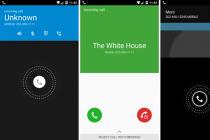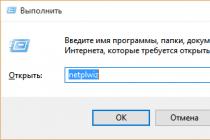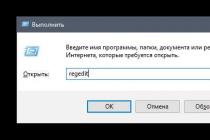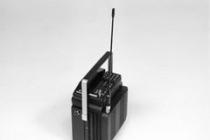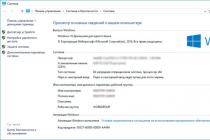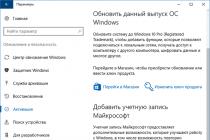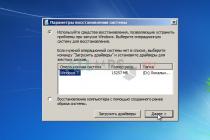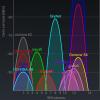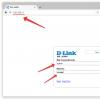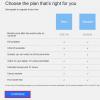Read in the article, examples of faulty sounds hard disk and how to identify them... Clicking or rustling sounds, vibration or whistling sounds that were not there before. A working hard drive is a fairly quiet device that can remind of itself only with a soft click when accessing it or turning on / off the computer. But if, over time, the sounds of clicking or rustling, as well as vibration or whistling, which were not heard earlier, began to be heard from the hard disk, then such HDD possibly out of order.
Western digital
Dull sound of faulty hard drive heads.
Defective disk heads click slowly several times, after which the rotation of the disk slows down.
Slowing down the rotation of the platters of the hard disk after producing several clicking sounds by the failed heads.
A hard drive with a jammed spindle cannot spin up.
Clicking sounds of a hard drive with a failed preamplifier chip.
A disc with erratic heads that stop after a few clicks.
A laptop hard drive with a jammed spindle that is trying to spin up with a siren-like sound.
The computer hard drive cannot spin up due to faulty bearings.
Seagate
Rustling and clicking sounds produced by a disc with inoperative heads.
Sounds made by a disc with damaged heads during startup (spinning the plates).
Clicks from defective laptop hard drive heads.
A disk with a jammed spindle is trying to spin up.
The boring sound of broken disc heads.
Maxtor
A computer hard drive with a broken or broken head unit.
Clicks of inoperative heads.
The sound made by a disc with a jammed spindle.
Samsung
A fast clicking sound indicates a failure of the hard drive heads.
The same as with the previous disc.
Sound of damaged hard drive heads.
A worn-out computer disk that emits a scratching sound when accessing bad sectors.
Hitachi / IBM
A laptop hard drive with damaged heads clicks at startup and then beeps.
A worn-out computer disk that emits a scratching sound when accessing an area with bad sectors.
A disc with worn out plates and a block of heads makes wheezing and howling sounds.
Whirring laptop disk with a jammed spindle trying to spin.
Toshiba
Sound of broken bearings on a laptop hard drive.
The sound of worn bearings on a laptop hard drive.
The sound of a laptop hard drive jamming.
Fujitsu
Worn laptop hard drive heads.
Defective laptop hard drive heads.
Sound of worn-out computer hard disk platters.
Quantum
Defective head block.
What to do if the hard drive starts to make extraneous sounds
- The first step is to make sure that the hard drive is the source of the sound being emitted.
- After you are convinced that it is the hard drive that is making the sounds that bother you, run the diagnostic utility hard disk. You can use both those supplied by the manufacturers with the device, and from third party manufacturers... Just keep in mind that, at best, the diagnostic utility will detect and limit the use of bad sectors of the hard disk, which can be the cause of incorrect or unstable disk operation. If there is mechanical damage or wear on the hard drive, it is impossible to fix them using software.
- If after using the diagnostic software nothing has changed in the operation of the disk, it is recommended to immediately create a copy of the data of such a hard disk or its image for further recovery.
How to create an image of a failed or damaged disk using Hetman Partition Recovery. - If, as a result of the use of a diagnostic or restorative software the sounds of the hard disk have partially or completely disappeared, then it is possible that there are bad sectors on it. In this case, it is still recommended to create a backup of all data hard disk and think about replacing it, since bad sectors may continue to appear on the disk and this will eventually lead to data loss or failure.
Other sounds your computer can make
The hard drive is not the only device in your computer that can make sound. It can also be a power supply, cooler, CD / DVD drive, or other devices connected to it. SSD drives do not make any sounds as they have no moving parts. Therefore, before taking any action, it is important to correctly identify the source of the sound.
If the computer is performing some complex tasks or running a resource-intensive game, then it will be normal for the computer to run louder - the computer's coolers will spin faster to cool it down. Sometimes, a dirty or broken cooler makes more noise than other devices.
Every time the computer boots up, the system unit emits a squeak. Not everyone knows that this is a signal showing performance. system unit... And only a few know the decoding of these signals from the "sistemnik".
Let's talk about this. If you are reading this material, I recommend that you print it now. When decryption is needed, it will not be possible to get out on the Internet. :)
So what is the "sistemnik" squeaking about? These signals are the results of testing the computer hardware (there is a cooler, RAM, vidyuha, etc.). Every time you boot the computer, it tests the hardware, and reports the results with this squeak. The decoding of the squeaks of the system unit is below.
* One short squeak.
Decoding:
Everything is fine. The test passed successfully. You can continue to work. It so happens that some system blocks do not squeak at all at this moment.
* There is no squeak, no image on the computer screen.
Decoding:
Faults in the power supply or processor.
Correction:
First, see if the power cord is plugged into the outlet. If everything is in order, try connecting a known working device to the surge protector (such a cord with a box in which there are many sockets, there is also a switch button, usually red). A charger for a phone will do, of course, with a phone connected to it. It is necessary to check all the sockets of the surge protector. If the socket is working, the phone will charge. Next, we check if the power supply starts up when the computer start button is pressed. In this case, the cooler (fan) of the power supply should at least jerk. If there is movement, look for new processor, otherwise - a new power supply. You also need to check the power cable of the matrinsky board. It may happen that he walked away.
* One long continuous squeak.
Decoding:
Power supply defective.
Correction:
Purchase of a new power supply unit.
* Two short squeaks.
Decoding:
Minor faults in BIOS settings.
Correction:
Go to BIOS and install optimal parameters... The exit to the BIOS is carried out, usually, with the key. If you do not know what to change, then set the default values. To do this, press the button. To exit with saving -,. Some BIOS versions themselves suggest conflicting settings items with backlighting. Also, you can reset the BIOS settings by removing the motherboard battery for a few seconds.
* Three long squeaks.
Decoding:
There is no keyboard.
Correction:
Plug the keyboard into the PS / 2 socket. If this does not help, you will have to change the keyboard.
* Three short squeaks.
Decoding:
Error random access memory.
Correction:
To do this, you need to check if there are memory strips on the motherboard. Don't laugh, it happens. Then you need to take out all the memory strips, gently sweep away the accumulated dust, and alternately stick the memory strip, and start the system unit. If the "sistemnik" squeaks on some bar, it may mean that the bar is faulty.
* One long and one short squeak.
Decoding:
RAM is not working properly.
Correction:
Perhaps one or more memory sticks are in conflict with each other. It is necessary to stick one memory strip at a time and try to start the computer.
* One long and two short squeaks.
Decoding:
The video adapter is not working properly.
Correction:
Correct settings in BIOS.
* One long and three short squeaks.
Decoding:
The video adapter does not work.
Correction:
Check the performance of the video card. To do this, you need another, obviously working video card. You can also try to remove the card, remove dust from the slot, and stick the card in place. And do not forget to check if there are additional power plugs on the card. Power to such video cards must be supplied with a separate cord, to which no device is connected. I also suggest checking if the monitor is connected and working. Try blowing out the connector connecting the monitor to the computer.
* One long and eight short squeaks.
Decoding:
The video adapter is not working or the monitor is not connected.
Correction:
So the same as described above.
* One long and nine short squeaks.
Decoding:
BIOS data read error.
Correction:
Try to reset the BIOS settings by removing the battery. If this does not help, then flashing the BIOS. But that's another story that requires a separate article. I will try to write it as soon as possible.
* Four short squeaks.
Decoding:
The system timer is not working.
Correction:
You can try resetting the BIOS. But, unfortunately, it rarely helps. There is only one way out - to change or repair the motherboard.
* Five short squeaks.
Decoding:
The processor is not working properly.
Correction:
Try to clean the dust from the processor slot, make sure the heatsink is clean and the processor temperature is low.
* Six short squeaks.
Decoding:
Defective keyboard.
* Seven short squeaks.
Decoding:
Motherboard malfunctions.
Correction:
Send the motherboard for repair, or purchase a new one.
* Eight short squeaks.
Decoding:
Malfunctions in the video memory.
Correction:
Take the video adapter for repair, or purchase a new one.
* Nine short squeaks.
Decoding:
Incorrect BIOS checksum.
Correction:
It is usually suggested to reset the BIOS settings and allow you to continue working. In which case, you can reset the BIOS by removing the battery.
* Ten short squeaks.
Decoding:
Error writing data to the CMOS chip.
Correction:
This error can occur when flashing the BIOS. Therefore, we will describe this part in another article.
* Eleven short squeaks.
Decoding:
The cache memory is not working properly.
Correction:
Reset BIOS. If this does not help, we take the computer for repair, or install a new processor.
* Repetitive long squeaks.
Decoding:
Defective or incorrectly connected RAM.
Correction:
Reconnecting memory sticks. Computing faulty, by connecting in turn and starting the computer. Dust cleaning.
* Repetitive short squeaks.
Decoding:
The power supply unit is not working properly.
Correction:
Checking the operation of the power supply, checking the cords for breakage, checking the power filter, and, last of all, replacing the power supply.
That's all. If you have any questions - ask.
PS: To reset the BIOS, instead of removing the battery, you can use a special jumper - a jumper. Its location can be found in the documentation for the motherboard.
Supplement: BIOS signal coding if the computer died.
AWARD BIOS signals
Continuous signal. Power supply defective.
2 short. Minor bugs found.
3 long. Keyboard controller error.
1 long + 1 short. RAM problems.
1 long + 2 short. Video card problem.
1 long + 3 short. An error occurred while initializing the keyboard.
1 long + 9 short. An error occurred while reading data from the read-only memory chip.
1 long repeating. Memory modules installed incorrectly.
1 short repeating. Problems with the power supply.
AMI BIOS signals
There are no signals. The power supply unit is faulty or not connected to the motherboard.
1 short. No errors were found.
2 short. RAM parity error.
3 short. An error occurred during the first 64 KB of main memory.
4 short. The system timer is defective.
5 short. The central processor is defective.
6 short. Defective keyboard controller.
7 short. Faulty motherboard.
8 short. Defective video memory.
9 short. Checksum error of the contents of the BIOS chip.
10 short. Unable to write to CMOS memory.
11 short. Defective external cache memory (installed in slots on the motherboard).
1 long + 2 short. The video card is defective.
1 long + 3 short. The video card is defective.
1 long + 8 short. Problems with the video card or the monitor is not connected.
PHOENIX BIOS signals
1-1-3. Error writing / reading CMOS data.
1-1-4. Checksum error of the contents of the BIOS chip.
1-2-1. The motherboard is defective.
1-2-2. DMA controller initialization error.
1-2-3. An error occurred while trying to read / write to one of the DMA channels.
1-3-1. RAM regeneration error.
1-3-3. An error occurred while testing the first 64 KB of RAM.
1-3-4. An error occurred while testing the first 64 KB of RAM.
1-4-1. The motherboard is defective.
1-4-2. RAM test error.
1-4-3. System timer error.
1-4-4. I / O port access error.
3-1-1. Error initializing the second DMA channel.
3-1-2. Failed to initialize the first DMA channel.
3-1-4. The motherboard is defective.
3-2-4. Keyboard controller error.
3-3-4. Video memory testing error.
4-2-1. System timer error.
4-2-3. Line error A20. Defective keyboard controller.
4-2-4. An error occurred while working in protected mode. The central processor may be defective.
4-3-1. An error occurred while testing the RAM.
4-3-4. Real time clock error.
4-4-1. Serial port test error. The error can be caused by a device using this port.
4-4-2. An error occurred while testing the parallel port. The error can be caused by a device using this port.
4-4-3. An error occurred while testing the math coprocessor.
Computer repair articles - It Service Rating 5.0 /5
In this article, we will try to diagnose your computer yourself. And so, if when the computer starts, it does not start and emits various beeps - this means that the Bios of the motherboard has detected errors in the operation of the equipment. Let's first figure out what Bios is. BIOS is the basic data input / output system, in other words, the firmware that is responsible for starting the computer. BIOS versions are different (AwardBIOS, Phoenix AwardBIOS, AMIBIOS).
Various BIOS versions.
If you want to find out detailed information about your Bios, it is enough to run the "System Information" utility in the operating system (START> PROGRAMS> STANDARD> Utilities> SYSTEM INFORMATION), or when starting the computer, press the "DEL" or "F2" key, and then You will immediately be taken to the BIOS settings, usually the "Main" section. But what about when the computer does not start and emits various beeps. Usually, if the computer does not turn on and beeps, it means that some hardware is malfunctioning. Below, in the table, we will try to give sound signals for different BIOS versions with their description. And so we went:
Phoenix Award SignalsBIOS
| Signal type | Signal value |
|---|---|
| One short | |
| Two short | |
| Three short | Error while testing RAM |
| Four short | Faults in the motherboard (timer problems) |
| Five short | Possible malfunction in the processor |
| Six short | |
| Seven short | |
| Eight short | Graphics card problems |
| Nine short | BIOS firmware issues |
| Ten short | |
| Eleven short | Malfunction in the motherboard, possibly damaged cache memory chips |
AwardBIOS signals
| Signal type | Signal value |
|---|---|
| One short | The equipment has been tested successfully |
| Two short | Lost CMOS settings, or other minor errors |
| Three long | Malfunction in the motherboard |
| One beep and a blank screen | Graphics card problems |
| One long and one short | Memory problems |
| One long and two short | Problems with the video card or the monitor is not connected |
| One long and three short | Keyboard error, possible problems with the keyboard controller |
| One long and many short | Damage to the BIOS chip |
| Long standing | Memory problems (incorrectly installed, defective), the motherboard may not support given type memory |
| Permanent short | Power supply problems |
| No signals | Power supply problems |
Phoenix AwardBIOS Signals
| Signal type | Signal value |
|---|---|
| One short | The equipment has been tested successfully |
| Two short | Error while testing RAM |
| Three short | Error while testing RAM |
| Four short | Defective motherboard (timer problem) |
| Five short | Possible processor problems |
| Six short | Faulty keyboard or keyboard controller |
| Seven short | Faults in the motherboard (virtual mode error) |
| Eight short | Graphics card problems |
| Nine short | BIOS errors or corrupted BIOS chip |
| Ten short | BIOS error, data in BIOS is not updated |
| Eleven short | Faults in the motherboard, possibly damaged cache memory chips |
After identifying possible malfunctions of the motherboard or hardware, let's look at the solutions.
Problems associated with the operation of RAM.
If you have two memory cards installed, you can remove one of them one by one and thus find out which one is faulty, or if there is an additional card, replace it.
Problems related to the video card.
There are times when two video cards are installed on the computer, one integrated and the other external, in which case you can remove the external video card and connect the monitor to the built-in video adapter and thus find out which video adapter is faulty. You also need to remember that after removing the external video adapter, you may have to go to the appropriate BIOS section and enable the built-in video adapter.
Problems associated with wrong setting BIOS.
In such cases, when the computer starts, if it does start, go to Bios and load the default settings (Load Optimized Defaults) by pressing the F10 and Y key. If the computer does not start and does not pass the hardware check, you can reset the Bios manually. For this we need a screwdriver. We remove the left side cover of the system unit, find the CLEAR CMOS jumper (which has only two positions), set it to a different position and start the computer, of course it will not start. Then we put the jumper in the previous position and try to start the computer. Perhaps, after these operations, you will have to go to the Bios settings and re-configure them.
We will look at how to check a faulty power supply in the next article.
After you press the computer's power button, a distinctive beep is heard. It is given by the BIOS system upon successful completion of the self-test. This signal "says" that everything is in order with your PC, the system is ready to work. But what if there is no beep when turning on the computer? Let's take a closer look at the causes of the problem, consider the advice of specialists to eliminate the problem, and also take a closer look at the BIOS signals - how they report a particular malfunction with their sounds. Let's start?
Common signs of the problem
There is no beep when turning on the computer. The trouble, as they say, does not come alone. By itself, the problem rarely manifests itself on its own. Most often it is accompanied by a black monitor - there are no images on the screen.
At the same time, you can hear how the computer coolers are working properly. What can these signs mean?
What's wrong with the computer?
When you turn on the computer, there is no sound signal, and the device itself looks "dead" and does not react in any way to your manipulations?
Here is the consequence of the PC not passing the self-test. If you did not open the system unit before, then everything can mean only one thing: your BIOS is "covered" - the heart of the entire system. Deal with the problem, it can only be solved by a professional computer foreman.
But in any situation, there are exceptions. Perhaps the problem is not that serious. Therefore, if when you turn on the computer there is no sound signal, you should not rush to carry the PC to service center... First, you need to self-diagnose for more easily fixable problems.
Bad contact
Why is there no beep when turning on the computer? Perhaps it is a poor contact in one of the connections. So check carefully:
- Are they well connected computer mouse and a keyboard to the system unit.
- Is the monitor connector properly screwed on, etc.
Bad contact itself is not a joke. Such a problem can lead to rather sad consequences. It is a bad connection that can provoke the following troubles: your processor, motherboard or monitor will burn out.

Video card malfunctions
Does your computer not beep when you turn it on? The system may be unable to pass the self-test due to some kind of video card malfunction. Unfortunately, computers have not yet learned how to respond properly to everything. possible options component failures. Therefore, such a sad answer may come out.
The BIOS self-test text was conceived in such a way that a sequential check of all system components is carried out. And the video card is just at the very beginning of this list... It is simple to check that the root of the problem lies precisely in it: carefully remove the element from the system unit. Try turning on your computer after that.
If, in response to these actions, the BIOS stuns you with a squeak, then the problem is identified correctly - the video card is faulty. The case can be solved by replacing it with a similar serviceable device.
It is much more difficult to deal with the problem if your computer has an integrated video card. Indeed, in this case, you cannot do without a second device. If, after installing the second video card, the computer starts to turn on again normally, then the problem is clearly defined. Its root is in the integrated staffing system.
However, such a problem is not at all a reason to say goodbye to a computer that has a working motherboard and a perfectly functioning processor. As practice shows, with an external video card, a PC can serve the user for up to ten years!

Incorrect hardware installation
When you turn on the computer, the BIOS sound does not turn on? Perhaps your careless actions are the source of the problem. This applies to those cases when you yourself replaced any components in the system unit.
How to understand that this is the problem? Turn off the computer, and then remove the recently installed hardware from the system. If, when you turn it on, the characteristic squeak of BIOS reappears, then the point is in your actions. Most likely, the new board is either faulty or incompatible with your computer.
BIOS update
Missing sound when turning on your computer? Let's look at more rare, but still occurring cases. Sometimes the root of the problem is in the BIOS itself, namely, in its update. Perhaps you have equipped your PC with a new BIOS that is incompatible with your device.
How to avoid such a nuisance in the future? Pay attention to the test program, which is usually supplied with each BIOS equipment. Don't be too lazy to run it on your PC.
Is the new BIOS fully compatible with the components of your computer? Don't rush to install it right away. The first step is to protect your computer from sudden power outages. The UPS will help you with this - an uninterruptible power supply.
Why is this needed? If the power supply stops at the time of the BIOS update on your computer, there is a 99.9% chance that the device will never turn on again.

No internal speaker
How to make a BIOS sound when you turn on the computer? The user himself can configure this characteristic squeak, he cannot activate it. The only thing that is possible is to turn on the melody when greeting "Windows". But the OS interface settings have nothing to do with our problem.
So, you do not hear the characteristic BIOS signal when you turn on the computer. Moreover, the splash screen with the name of your motherboard did not appear, there is no report message with the results of the system status check. But at the same time you see a greeting operating system, The PC boots normally.
What it is? Your computer is functioning properly! Before us is a "false signal" of the alarm. The problem is that the PC doesn't have an internal speaker. This does not prevent it from functioning normally, but it can become a source of problems in the future. After all, it is through this speaker that the BIOS informs about normal work or certain system problems. With such an oversight, it is worth contacting the collector of your system unit. Most likely, he simply forgot to install the beeper.

What is POST?
Let's now get acquainted with the test, the successful completion of which is indicated by this signal. Power-On-Self-Test is a diagnostic program for self-testing of the system, which is recorded in the BIOS ROM.
POST is designed to test all the most important system components:
- CPU;
- RAM;
- motherboard chips.
Information about the passage of the test, respectively, is announced through the internal speaker of the system with a certain sound signal. If any of the components is inoperative, a certain series of long and short beeps will be issued. After doing this, the computer will most likely turn off automatically.
What should be done in this case? Listen carefully to the signal and remember, write down the sequence of short and long beeps. If you did not have time to do this, then turn on the computer 30 seconds after it was automatically deactivated. The signal will be repeated.
What to do next? Refer to your motherboard manufacturer's instructions. Most likely, it will contain a table with the decoding of the BIOS signal. Such information is also available on the official websites of the "motherboard" manufacturers. Decoding the signal will help you find out on your own what is wrong with your computer, which of its components is faulty.

IBM BIOS signals
Each of the motherboard models usually has its own decoding table. Unfortunately, there is no universal one. As an example, we will present the most common - IBM BIOS. The startup sounds are as follows:
- One short beep - the test was successful.
- There is no signal - the power supply is damaged.
- Continuous squeak - damaged power supply.
- Repeated short beeps - power supply problems.
- Long and short beeps - motherboard malfunction.
- A short signal coupled with a black screen - the video card is damaged.
- A long signal and two short beeps are problems with the video system.
- A long beep and three short beeps are problems with the video system.
- Two short beeps - monitor not connected.
- Three long beeps - motherboard defective, keyboard controller error detected.

The habitual beep of the internal speaker when you turn on the computer is an important signal that informs that your PC is working properly and ready to work. If there is no such sound message, then this may indicate both a problem with the BIOS and other malfunctions that we also considered. We advise you to find a table with signals on the motherboard manufacturer's website in order to identify the problem in time and solve it.
- What does the computer tell us when we turn it on? Does he say something? Have you noticed a beep when you turn on your computer? The computer wants to tell you that everything is fine, I boot, or if the sequence of many beeps and possibly not stopping indicates that the computer is not working properly. By these signals, you can understand and carry out, let's say, superficial diagnostics of the computer. Below with delivered tables of sound signals and the name of the manufacturer bios / AWARD, AMI, IBM, AST, Phoenix, Compaq, DELL, Quadtel
- If you don't hear a beep when you turn on your computer? there are several options why this can happen:
- 1.) There is probably no speaker through which your computer gives you post code beeps.
- 2.) Damaged bios.
- 3.) In this case, you must judge by other visual actions of your computer. Let's say, as an example, does it even turn on? =)
- Beep codes are represented by a sequence of beeps. For example, 1-1-2 means 1 beep, pause, 1 beep, pause, and 2 beeps.
- At the end of the article I would like to offer you a service for the repair of computer equipment in Podolsk
If there is no beep?
If you do not have a beep when you turn on the computer, let's see why this is happening? Write in the comment at the bottom of the page what actions the computer does when it turns on? What errors occur when turning on? Describe in more detail in the comments and your message will come to my phone, I will answer your questions.
Help on how to understand the information in the tables below:
AWARD BIOS beeps
| Signal | Value (Description of error) |
|---|---|
| 1 short | POST completed, no errors were found, and the system continues booting. |
| 2 short | A non-fatal error has occurred that can be corrected with BIOS settings Setup. The signal may be accompanied by a message describing the error and a message prompting you to enter BIOS Setup. |
| 3 long | Keyboard controller error. It is recommended that you restart your computer. If the error persists, the problem is with the motherboard. |
| 1 short, 1 long | RAM error. It is recommended to restart the computer, remove the RAM modules from the slots, and insert them back. If the error persists, you will need to replace the RAM modules. |
| 1 long, 2 short | |
| 1 long, 3 short | |
| 1 long, 9 short | The error occurs in case of problems when reading the BIOS or if the BIOS chip is faulty. Often, the solution to this malfunction is a BIOS flashing. |
| Repetitive short | The power supply is defective. It is necessary to replace the PSU. The error also occurs when there is a short circuit in the power supply circuits. |
| Repeating long | RAM error. The alarm can occur if the RAM modules are not installed correctly (or one of the RAM modules is faulty) |
| Continuous | The power supply is defective. It is necessary to replace the PSU. |
| No signal | The power supply is defective or not connected to the motherboard |
AMI BIOS beeps
| Signal | Value (error description) |
|---|---|
| 1 short | POST Completed, No Errors Found, System Boot Continues |
| 2 short | RAM parity error. It is recommended to restart the computer, remove the RAM modules from the slots, and insert them back. If the error persists, you will need to replace the RAM modules. |
| 3 short | Error in the first 64 KB of RAM. It is recommended to restart the computer, remove the RAM modules from the slots, and insert them back. If the error persists, you will need to replace the RAM modules. |
| 4 short | Defective motherboard system timer. If the error occurs every time you turn on the computer, you need to replace the motherboard. |
| 5 short | Processor problems. It is recommended that you restart your computer. If the problem persists, the CPU must be replaced. |
| 6 short | Keyboard error. It is necessary to check the quality of the connection of the keyboard connector with the connector on the motherboard. The signal can occur in the event of a malfunction of the keyboard or motherboard. |
| 7 short | Motherboard error. It is recommended that you restart your computer. If the problem persists, the system board must be replaced. |
| 8 short | No video adapter or video memory error detected. Check the quality of the video card installation in the expansion slot. If the video card is integrated, you may need to replace the motherboard. |
| 9 short | BIOS checksum error. The signal may be accompanied by a message describing the error. The problem can be solved by updating (firmware) the BIOS content. |
| 10 short | Error writing to CMOS memory. It is recommended that you restart your computer. If the problem persists, you need to replace the motherboard or CMOS chip |
| 11 short | External cache error (this is the memory that is installed in the slots on the motherboard). |
| 1 long 2 short | |
| 1 long 3 short | No video adapter found. The error can occur if the video adapter is not connected or it is faulty. Check the quality of the installation of the video card in the expansion slot. If the problem is not resolved, most likely you will need to replace the video card. |
| 1 long 8 short | No video adapter or video memory error detected. Check the quality of the installation of the video card in the expansion slot. If the video card is integrated, you may need to replace the motherboard. The signal can occur if the monitor is not connected to the video card. |
| No signals | The power supply is defective or not connected to the motherboard. |
IBM BIOS beeps
| Signal | Value (error description) |
|---|---|
| 1 short | Successful POST |
| 1 signal and blank screen | Video system defective |
| 2 short | Defective video system |
| 3 long | Defective motherboard (keyboard controller error), non-contact of RAM |
| 1 long, 1 short | Defective motherboard |
| 1 long, 2 short | Defective video system (Mono / CGA) |
| 1 long, 3 short | Defective video system (EGA / VGA) |
| Repetitive short | Faults related to the power supply or motherboard |
| Continuous | Problems with the power supply or motherboard |
| Absent | Defective power supply, motherboard, or speaker |
AST BIOS beeps
| Signal | Value (error description) |
|---|---|
| 1 short | Error checking processor registers. Processor malfunction |
| 2 short | Keyboard controller buffer error. Keyboard controller malfunction. |
| 3 short | Keyboard controller reset error. Faulty keyboard controller or system board. |
| 4 short | Keyboard communication error. |
| 5 short | Keyboard input error. |
| 6 short | System board error. |
| 9 short | BIOS ROM checksum mismatch. The BIOS ROM is defective. |
| 10 short | System timer error. The timer system chip is defective. |
| 11 short | System logic chip (chipset) error. |
| 12 short | Power control register error in non-volatile memory. |
| 1 long | DMA controller 0 error. Channel 0 DMA controller chip is faulty. |
| 1 long, 1 short | DMA controller error 1. The channel 1 DMA controller chip is defective. |
| 1 long, 2 short | The error of blanking the reverse motion of the frame scan. The video adapter may be defective. |
| 1 long, 3 short | Error in video memory. The video adapter memory is defective. |
| 1 long, 4 short | Video adapter error. The video adapter is defective. |
| 1 long, 5 short | 64K memory error. |
| 1 long, 6 short | Failed to load interrupt vectors. BIOS was unable to load interrupt vectors into memory |
| 1 long, 7 short | Failed to initialize video subsystem. |
| 1 long, 8 short | Video memory error. |
Phoenix BIOS beeps
| Signal | Value (error description) |
|---|---|
| 1-1-2 | Processor test error. The processor is defective. Replace processor |
| 1-1-3 | Error writing / reading data to / from CMOS memory. |
| 1-1-4 | An error was detected while calculating the checksum of the BIOS content. |
| 1-2-1 | |
| 1-2-2 or 1-2-3 | DMA controller initialization error. |
| 1-3-1 | An error occurred in the initialization of the RAM regeneration circuit. |
| 1-3-3 or 1-3-4 | Initialization error for the first 64 KB of RAM. |
| 1-4-1 | Motherboard initialization error. |
| 1-4-2 | |
| 1-4-3 | |
| 1-4-4 | Error writing / reading to / from one of the I / O ports. |
| 2-1-1 | An error was detected while reading / writing the 0th bit (in hexadecimal notation) of the first 64 KB of RAM |
| 2-1-2 | An error was detected while reading / writing the 1st bit (in hexadecimal notation) of the first 64 KB of RAM |
| 2-1-3 | An error was detected when reading / writing the 2nd bit (in hexadecimal notation) of the first 64 KB of RAM |
| 2-1-4 | An error was detected when reading / writing the 3rd bit (in hexadecimal notation) of the first 64 KB of RAM |
| 2-2-1 | An error was detected when reading / writing the 4th bit (in hexadecimal notation) of the first 64 KB of RAM |
| 2-2-2 | An error was detected when reading / writing the 5th bit (in hexadecimal notation) of the first 64 KB of RAM |
| 2-2-3 | An error was detected while reading / writing the 6th bit (in hexadecimal notation) of the first 64 KB of RAM |
| 2-2-4 | An error was detected while reading / writing the 7th bit (in hexadecimal notation) of the first 64 KB of RAM |
| 2-3-1 | An error was detected while reading / writing the 8th bit (in hexadecimal notation) of the first 64 KB of RAM |
| 2-3-2 | An error was detected while reading / writing the 9th bit (in hexadecimal notation) of the first 64 KB of RAM |
| 2-3-3 | An error was detected while reading / writing the 10th bit (in hexadecimal notation) of the first 64 KB of RAM |
| 2-3-4 | An error was detected while reading / writing the 11th bit (in hexadecimal notation) of the first 64 KB of RAM |
| 2-4-1 | An error was detected while reading / writing the 12th bit (in hexadecimal notation) of the first 64 KB of RAM |
| 2-4-2 | An error was detected while reading / writing the 13th bit (in hexadecimal notation) of the first 64 KB of RAM |
| 2-4-3 | An error was detected when reading / writing the 14th bit (in hexadecimal notation) of the first 64 KB of RAM |
| 2-4-4 | An error was detected while reading / writing the 15th bit (in hexadecimal notation) of the first 64 KB of RAM |
| 3-1-1 | Error initializing the second DMA channel. |
| 3-1-2 or 3-1-4 | Failed to initialize the first DMA channel. |
| 3-2-4 | |
| 3-3-4 | Video memory initialization error. |
| 3-4-1 | Serious problems were encountered while trying to access the monitor. |
| 3-4-2 | Unable to initialize video card BIOS. |
| 4-2-1 | System timer initialization error. |
| 4-2-2 | Testing completed. |
| 4-2-3 | Keyboard controller initialization error. |
| 4-2-4 | Fatal error during the transition of the central processor to protected mode. |
| 4-3-1 | RAM initialization error. |
| 4-3-2 | Error initializing the first timer. |
| 4-3-3 | Error initializing the second timer. |
| 4-4-1 | Error initializing one of the serial ports. |
| 4-4-2 | Parallel port initialization error. |
| 4-4-3 | Math coprocessor initialization error. |
| Long, continuous beeps | The motherboard is defective. |
| Siren sound from high to low frequency | The video card is faulty, check the electrolytic capacities for leaks or replace everything with new ones that are known to be in good working order. |
| Continuous signal | The CPU cooler is not connected (faulty). |
Compaq BIOS Beeps
| Signal | Value (error description) |
|---|---|
| 1 short | |
| 1 long + 1 short | Checksum error in CMOS BIOS memory. The ROM battery may have run out. |
| 2 short | Global error. |
| 1 long + 2 short | Video card initialization error. Check if the video card is installed correctly. |
| 7 beeps (1 long, 1 s, 1 ?, 1 short, pause, 1 long, 1 short, 1 short) | Malfunction of the AGP video card. Check if the installation is correct. |
| 1 long standing | RAM error, try rebooting. |
| 1 short + 2 long | Defective RAM. Reboot via Reset. |

